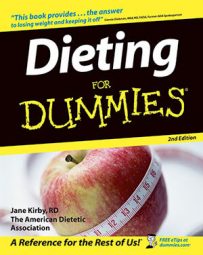Body Mass Index (BMI) and waist size allow you to quickly compare your weight to the healthy weight range for your height and judge your relative “fatness.”
But other, high-tech ways are available to determine how much fat you have, which is often referred to as your percent body fat. They’re not the methods of choice because they're impractical, imprecise, or both.
Here's a closer look at these various methods and their limitations:
Underwater weighing: This is the most accurate method for determining your percent body fat, but it’s the least practical, because it’s done with sophisticated equipment at university research facilities. This method is based on the premise that fat floats.
To determine your percent body fat in this manner, you sit in a large tank or tub full of water in a special chair with a weight belt around your waist. A trained technician then submerges you beneath the surface of the water as you force all the air out of your lungs. You must remain underwater for about 10 seconds so that the technician can record your weight.
The technician repeats this procedure eight to ten times to determine an average. To measure your body’s volume, the technician computes the difference between your body’s weight measured in air and its weight underwater. The technician then calculates your body density by dividing your body mass by the volume of the water that it displaces, minus any air left in your lungs. After computing density, the technician uses another formula to determine your percent body fat.
Skin-fold thickness: To find out your percent body fat using the skin-fold test, a doctor, dietitian, or trained health club staffer, measures your skin-fold thickness using skin-fold calipers at the upper arm, upper back, lower back, stomach, and upper thigh.
The technician takes two sets of measurements and obtains an average at each site. Then he converts the millimeters that the calipers measure and places those numbers in a formula to arrive at the percent body fat of your entire body. This method can yield inaccurate results if a less-than-skilled individual takes the measurements or if the test is performed on an older person or on someone who is severely overweight.
Bioelectrical impedance: Bioelectrical impedance is another relatively simple method for determining percent body fat, but it can produce inaccurate results if a person is dehydrated, overhydrated, severely overweight, or older with little muscle mass.
Using bioelectrical impedance, a trained technician takes readings from a machine that delivers a harmless amount of electrical current through your body to estimate total body water, which reflects the amount of muscle or lean tissue you have. (Muscle contains water, and fat contains little water.) To determine the amount of body fat you have, the technician finds the difference between your body weight and your lean tissue.
After you get your percent body fat measured by underwater weighing, skin-fold caliper, or bioelectrical impedance, use these estimated guidelines to assess your weight.
| Percent Body Fat | ||
| Women | Men | |
|---|---|---|
| Normal (optimal) | 15 to 25 percent | 10 to 20 percent |
| Overweight | 25.1 to 29.9 percent | 20.1 to 24.4 percent |
| Obese | Over 30 percent | Over 25 percent |

